Written in his passionate and robust style, Lord Byron described the majesty of Rome’s Pantheon (“pride of Rome!”) in his lengthy narrative poem, ‘Childe Harold’s Pilgrimage’ (1812-1818):
Simple, erect, severe, austere, sublime—
Shrine of all saints and temple of all gods,
From Jove to Jesus—spared and blest by time;
Looking tranquility, while falls or nods
Arch, empire, each thing round thee, and man plods
His way through thorns to ashes—glorious dome!
Shalt thou not last? Time’s scythe and tyrants’ rods
Shiver upon thee— sanctuary and home
Of art and piety—Pantheon! —pride of Rome! (CXLVI)
Relic of nobler days, and noblest arts!
Despoil’d yet perfect, with thy circle spreads
A holiness appealing to all hearts—
To art a model; and to him who treads
Rome for the sake of ages, Glory sheds
Her light through thy sole aperture; to those
Who worship, here are altars for their beads;
And they who feel for genius may repose
Their eyes on honour’d forms, whose busts around them close. (CXLVII)
There are many places in Rome that embody Byron’s description of “a holiness appealing to all hearts”. When Oscar Wilde visited the grave of Romantic poet, John Keats, in the Protestant Cemetery in Rome, he declared that this place, sheltered by Mediterranean Cypress trees, was “the holiest place in Rome”. For me, the Pantheon is Rome’s spiritual heart, infusing the immediate area with an energy that is both divine and human. The narrow streets and crooked cobblestone lanes that radiate out from this ancient temple (pan: to every god; theon: temple) provide a visual feast of art and architecture. This heartland of Rome would have been perfectly familiar to the Grand Tourists, who included Byron and Keats. However, much has changed since the mid-nineteenth century; for example, the Piazza della Rotonda in front of the Pantheon was a fish market until 1847.
The Vatican and Michelangelo’s Sistine Chapel would have been essential viewing for the Grand Tourist, who would weep at the sight of the dying Gaul, sigh before the head of Minerva, and swoon over the entwining snakes of the Laocoön. However, if you have limited time in Rome, why not resist these tourist magnets and experience the ‘real’ Rome? In doing so, you will probably avoid the crowds and the hefty entrance fees. Art critic Robert Hughes wrote in his book, ‘Rome’ (2011), that the Sistine Chapel “represents the kind of living death for high culture that lurks at the end of mass culture”.
This art is in situ, intrinsically linked to that place, building, street, piazza, and therefore adding meaning. The historical threads that unify the area around the Pantheon include Egyptian and Roman antiquity; the powerful religious institutions of the Jesuits and the Dominicans; the Counter Reformation and the urbanisation programme of Pope Alexander VII (1655-1667).
A few paces behind the Pantheon in the Piazza della Minerva is a stone elephant with a distinctive personality (featured on the cover), and one of the many works of art seen throughout this walk by sixteenth-century Baroque artist, Gianlorenzo Bernini (1598-1680). This sculpture of an elephant with an obelisk on its back is affectionately called the pulcino della Minerva (the chick of Minerva) and dominates the piazza: the tilt of the head, the flick of the trunk and the cheeky swish of the tail adds life to the cold stone. Each time I visit Rome I am happy to reacquaint myself with the pulcino della Minerva.
When an Egyptian obelisk was found buried beneath the foundations of a wall near the Piazza della Minerva in 1665, Pope Alexander VII asked his favourite sculptor, Bernini, to submit a design for a piazza centrepiece that would incorporate the obelisk. The Minerva sculpture of an elephant with an obelisk combines the bold and theatrical style of the Baroque and a pagan symbol—in front of a church! Bernini’s inspiration is thought to have derived from Hypnerotomachia Poliphili (Poliphilo’s Dream of the Strife of Love), the fifteenth-century novel probably by Francesco Colonna. The novel’s main character meets a stone elephant carrying an obelisk. Bernini’s pupil, Ercole Ferrata, actually sculpted the elephant. Completed in 1667, the piazza centrepiece glorifies Alexander VII’s reign by suggesting that strength should support wisdom (a dedication to Minerva, the goddess of wisdom). The obelisk is crowned with the insignia of the pope’s family name, Chigi (six mountains and star), with the cross of Christ on top. The Latin inscription reads, in part:
He who sees the carved images of the wisdom of Egypt on the obelisk carried by the elephant, the strongest of animals, will realise that it is indeed a robust mind which sustains a solid wisdom.
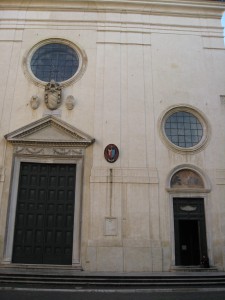 The basilica that borders the eastern side of the Piazza della Minerva is S. Maria sopra Minerva. The delightful mix of art within belies its austere façade; this e-guide provides detailed descriptions of the most important works of art. It is amazing that Michelangelo’s life-size marble statue, Risen Christ, is situated in this church without a security guard, and there is no entrance fee!
The basilica that borders the eastern side of the Piazza della Minerva is S. Maria sopra Minerva. The delightful mix of art within belies its austere façade; this e-guide provides detailed descriptions of the most important works of art. It is amazing that Michelangelo’s life-size marble statue, Risen Christ, is situated in this church without a security guard, and there is no entrance fee!
Close by this Dominican stronghold are two Jesuit churches: Il Gesu and S. Ignazio. The Dominican and Jesuit orders were powerful forces in the Roman Catholic Counter-Reformation that began with the Council of Trent (1545-1563) and ended in the mid-seventeenth century. Jesuit artists produced art that aimed to inspire devotion in the faithful and non-believers as a means of fighting against Lutheran ‘heresy’. As such, much of Rome’s religious Baroque art was propaganda, aimed at reviving Catholicism’s dominance. In art historical terms ‘baroque’ has come to signify the dominant artistic style of the seventeenth century which originated in Rome in the early 1600s and endured until the end of the century. Baroque painting and sculpture are characterised by drama, natural realism and emotional expressiveness. The seventeenth-century illusionistic ceiling paintings that you will encounter during this walk in these two Jesuit churches are prime examples.
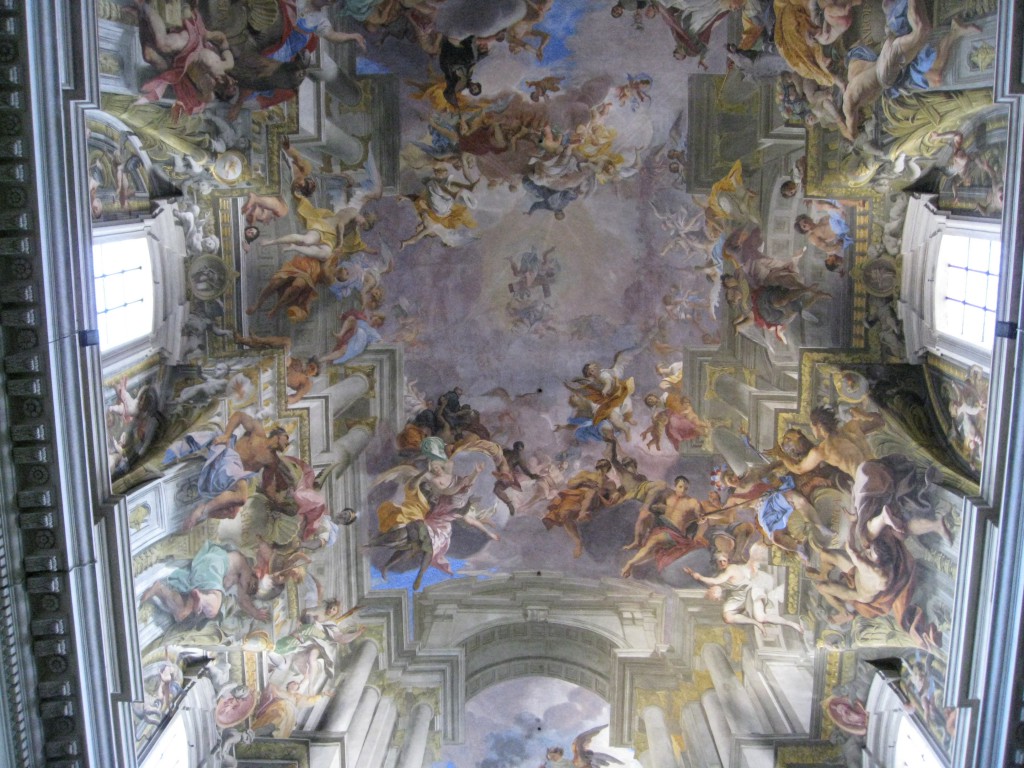
The glorious ceiling fresco in S. Ignazio by Andrea Pozzo, ‘Entry of St Ignatius into Paradise’, 1691-1694.
A hidden café just around the corner from the Pantheon on Piazza Sant’Eustachio is Caffè Sant’Eustachio, founded in 1938. Run by brothers Raimondo and Roberto Ricci since 1999, the coffee beans used in their coffees—such as a caffé normale (espresso) or a refreshing granita—are organic, fair-trade, and selected by Roberto on his tasting trips to South and Central America. Don’t forget to pay and get your ticket before you head to the counter. Then you can rest and listen to the chatter, inhale the aroma, taste the wholesome coffee, and soak up the visual sensation that is Roma.

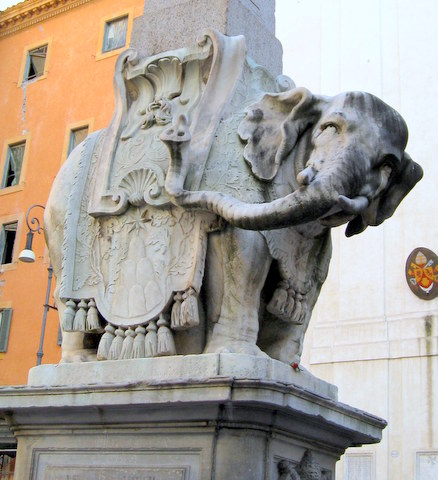
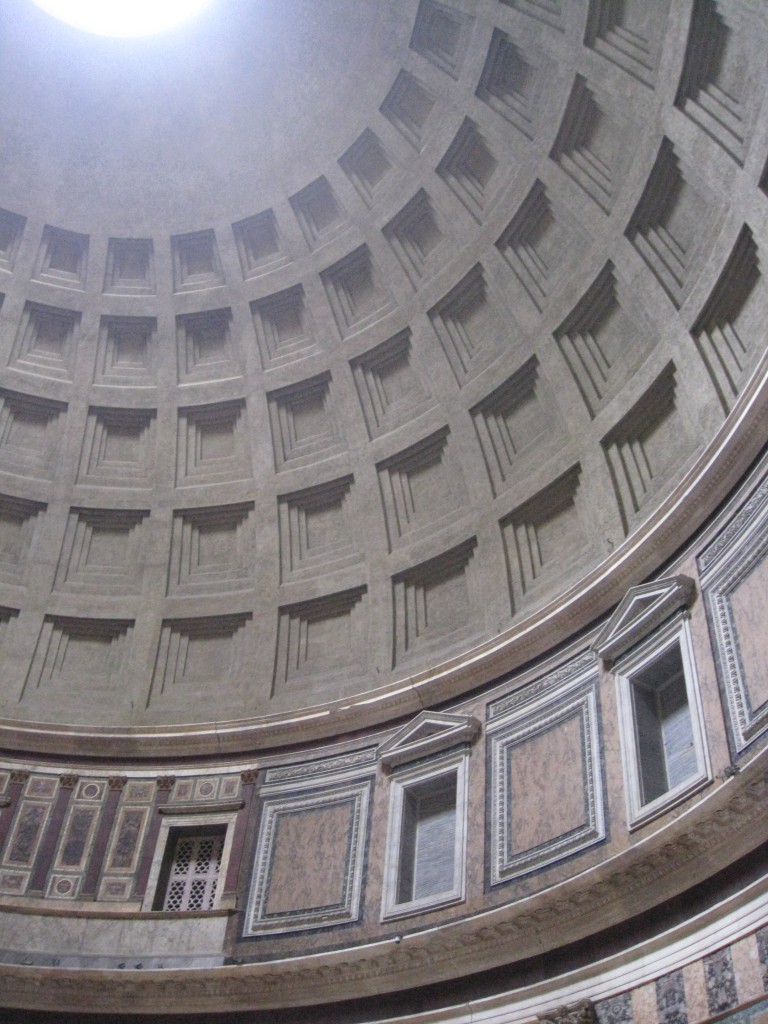
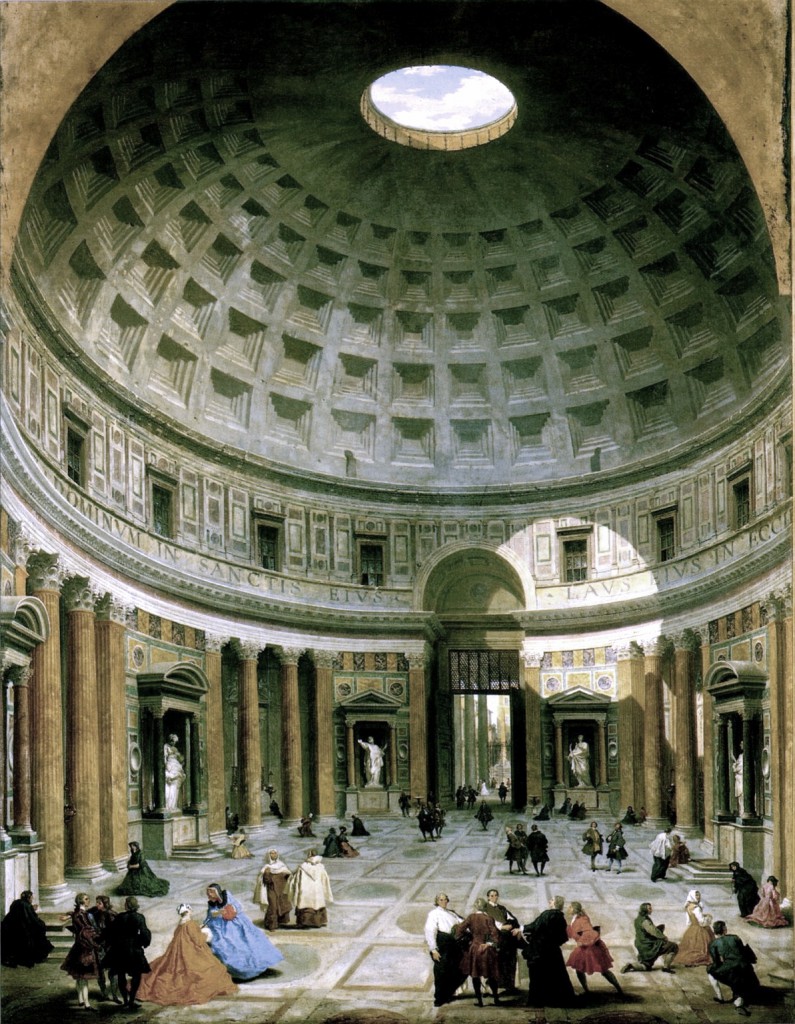
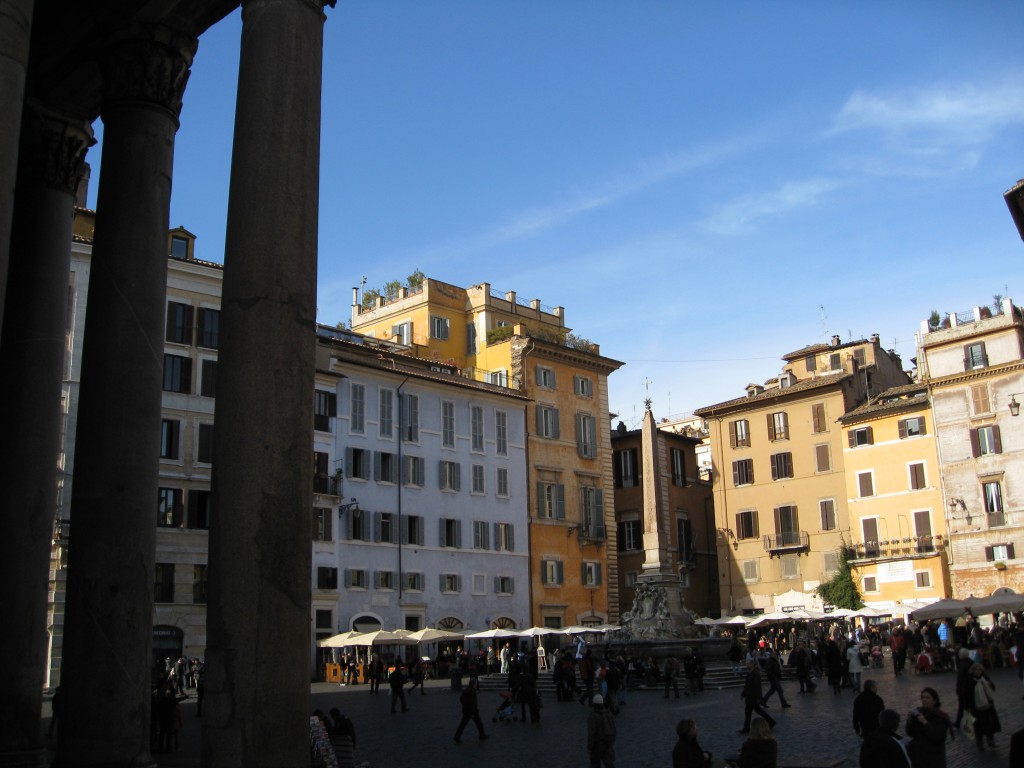



On the divine and the human:
I once sat at a table on the edge of the Piazza della Rotunda at dusk under a clear January sky: opposite, above the darkening silhouette of the skyline opposite was Venus, bright in the dying light, to the left, the Pantheon; and in the centre a number of rowdy young boys were kicking a soccer ball around the square.